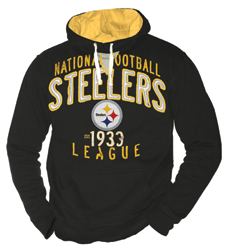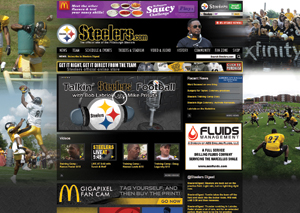Look, up in the sky. It’s an advertising campaign! It’s a marketing plan! It’s a branding program!
You shouldn’t have to be Superman to define what these terms really mean when sports teams are using them to sell their products and services to an increasingly crowded and complicated marketplace.
By using a simple litmus test a team can see if its organization has a unified business communication program. The head of business operations should call a meeting with the directors of marketing, promotion, ticketing, stadium operations, new media, public relations, website, sales, premium seating, community relations and broadcasting. If the team has an ad agency, its representatives should sit in. They should bring every item used to communicate with their fans, sponsors, media partners, league headquarters, staff and ownership.
Lay out the following pieces:
1. Brochures, magazines, programs, brand guides
2. Websites, social media sites, staff email address signatures
3. Stadium information guide, photos of all signage, tickets
4. Sales documents, sponsorship materials
5. Team stationery, merchandise
6. Logos, slogans for all departments and programs of the franchise, community, kids club, alumni, boosters
7. HR documents, booklets
8. All advertising vehicles including print, broadcast, outdoor signage
How unified is the message? In many instances, the team will be surprised and confused at the significant differentiation in messaging, look, tone, logos, fonts, slogans and direction. There was a team in a market that I worked in that had four different ad campaigns created by the team, its TV and radio flagships and its naming rights partner. That’s a recipe for disaster. Every team should have a least one senior executive who owns the team’s look.
A lack of brand unity is a telltale sign that a franchise is “speaking in tongues.” Teams living in the Tower of Babel are going to have a difficult time selling anything. If the organization is disjointed in its messaging, what are consumers going to think? Every team should have a written communication game plan just as the coach has for his players. It’s worthwhile to do focus groups during the season to make sure the messaging is consistently resonating with fans.
It may be worth the time to go back to basics and have all the message makers understand what the team is trying to accomplish by understanding some basic definitions.
Advertising: Calling attention to one’s product, service, or need by paid announcements through all forms of media.
Marketing: All activities involved in the transfer of goods from seller/producer to consumer, including advertising, selling and promotion.
 |
| The Steelers’ messaging is consistently about team, city, winning and quality ownership. |
Selling: Goods or services offered to another in exchange for money.
Branding: Kind, grade, make, stamp or trademark of your product. For example, “Best basketball team in the world.”
There is great confusion between product marketing and brand marketing. A brand is a story, a narrative, a relationship with fans and sponsors. It isn’t enough for a team to slap a logo and snappy slogan on a campaign and think it is on the right path.
Some sports organizations are afflicted with messaging ADD — Advertising Deficit Disorder. Teams change their advertising and branding messages as often as their uniforms. For example: year one, it’s about the team; year two, it’s about a star player; year three, it’s about trying to win a championship; year four, it’s about the new coach; year five, it’s about legacy or a special anniversary; year six, it’s back to year one. While it is important to take advantage of changing market conditions, don’t just change for effect.
The teams that “get it” have consistent messaging that stands the test of time. The Steelers and the Packers exemplify the best of the NFL in branding. They don’t mess around with cuteness. It’s all about team, city, winning and quality ownership. The Detroit Pistons’ “Going to Work” branding platform a few years ago was an NBA best practice, along with the consistent brand quality shown year after year by the Miami Heat. The Cubs, Yankees and Red Sox have kept their eye on the brand for decades. These teams have built some of the most bullet-proof business platforms in sports franchise history. They have combined their iconic ballparks, legendary players and fanatical fan bases to tell their stories. All you have to do is see their logos and you know what they stand for. When you think about the Detroit Red Wings, you know it’s all about being Hockeytown USA.
Sports TV is now routinely sponsored by brands gaining exposure at the beginning and end of commercial breaks. The battle to maintain exposure in a multiplatform world is causing advertising and media rights to overlap and converge, causing old distinctions to blur. If a team is stuck in the world of multiple messaging, how will it give sponsors the accountability, measurability and transparency of return that they are looking for?
As the keeper of a team’s brand is it is essential to vigilantly protect continuity, coherence and compatibility. It will lead to the holy grail of profitability.
Andy Dolich (andy.dolich@gmail.com) has more than four decades of experience in the professional sports industry, including executive positions in the NFL, MLB, NBA and NHL.






